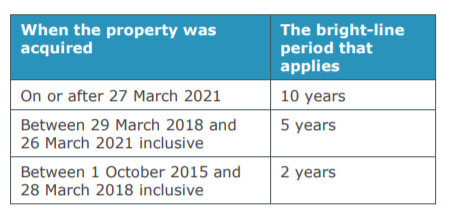Ten Tips to Improve Your Habits, and Your Business
Your habits are running your life – make sure they’re good ones!
We talk a lot about using your business as a tool to create the lifestyle you desire. Knowing where you want to go and creating a solid roadmap to get there is only the first step, albeit a very important one. But the next step – doing the work – is what trips many people up.
It’s easy to blame our outer circumstances for standing in our way of progress. But it’s often our own behaviour patterns that are holding us back. It’s also our behaviour patterns that get us to the finish line – if we can implement good ones.
We all have habitual patterns in our personal life and business practices. James Clear, author of the New York bestseller ‘Atomic Habits’ says,
“By the time we become adults, we rarely notice the habits that are running our lives. Most of us never give a second thought to the fact that we tie the same shoe first each morning, or unplug the toaster after each use, or always change into comfortable clothes after getting home from work. After decades of mental programming, we automatically slip into these patterns of thinking and acting.”
It’s worth considering that instead of having to make major changes to achieve success, you may just need to upgrade your habits and behaviour patterns.
But how do you do that? First, you need to identify those bad habits, then you need to disrupt them, and start forming new habits.
Step 1: Identify Your Bad Habits
Observe your habits for a few days. Do you distract yourself with social media to avoid doing something you dread, like paperwork or marketing? Or do you procrastinate on upgrading old equipment or outdated processes because it’s easier to avoid fixing them? Perhaps you’re among many business owners who are in the habit of not delegating.
Also write down the triggers that lead to a habit kicking in, as well as the ‘reward’ they provide.
Each habit has a trigger – when X happens, then you’ll do Y. For instance, when you sit down to do your paperwork, you suddenly feel tired and think you’ll just take a little break, and while at it, you’ll check what’s going on on Instagram. Similarly, every habit started because you got some type of reward out of it. Maybe you’re avoiding feeling uncomfortable when not delegating, because you find it hard to tell people what to do. Or you think it would be quicker to do yourself, rather than teaching someone, saving you time in the short term (but certainly not in the long run!)
Write down a few habits you can identify that are directly impacting the success of your business and keeping you from moving forward. Maybe you already know what it is. And maybe it’s just one big bad habit!
Step 2: Disrupt Your Patterns and Form New Habits
Now that you’ve identified the habits that you’re ready to kick to the curb, the fun part starts: disrupting your behavioural patterns.
A desire for change isn’t enough to create lasting improvement. Desire provides the fuel, but the effective application of it requires day-to-day action and creating new associations.
In his book, James Clear outlines how to create good habits and break bad habits by inversion.
How to create a good habit:
(Trigger) – Make it obvious.
(Craving) – Make it attractive.
(Response) – Make it easy.
(Reward) – Make it satisfying.
How to break a bad habit (inversion):
(Trigger) – Make it invisible.
(Craving) – Make it unattractive.
(Response) – Make it difficult.
(Reward) – Make it unsatisfying.
Using the distraction of social media as an example; you can disrupt the trigger by removing the app from your phone, or unfollowing groups that are wasting your time.
“To change a habit, make a conscious decision, then act out the new behaviour.” – Maxwell Maltz
Ten Tips to Reboot Your Habits
- Identify the bad habits that need disrupting.
- Be clear on what the outcome is that you want. When the reward is clear, you’ll be more intentional and motivated.
- Change the association of the outcome of the bad habit from a reward, to an unacceptable result.
- Pace yourself and start with one habit at a time. This will help to build momentum, rather than tackling too many and getting discouraged.
- Set your intention first thing each morning. What is your mini-goal for that day? Write it on a sticky note and keep it visible, like on your computer screen.
- Invest in your self-improvement by following business success groups and reading entrepreneurial books.
- Create reminders that are in-your-face unavoidable, such as pop-up calendar prompts, or something that forces you to take action. Get creative.
- Stay accountable. This could require involving a colleague or your spouse, a business coach or your accountant to help keep you on track.
- Monitor your progress. Review your accomplishments at the end of each week or month, and observe what new behaviour helped you achieve them.
- Be transparent with your team that you’re on this journey of shedding bad habits and creating better ones. Inspire them to bust their old habits too.
Need Help With Disrupting Bad Habits?
It may surprise you that, as accountants, we talk about helping you with developing better habits. But it’s actually not that strange. Our role as accountants has evolved to support the dreams and challenges of business owners – to be business advisors; to be your confidant – and forming better habits in business is a crucial part of it.
We are by no means perfect when it comes to following only good habits – but the best guides are often those who struggle with the same obstacles and have learned how to overcome them. Let us help you to define what success means to you, create a roadmap with you to get there, and then start implementing. Your dream is worth it!


